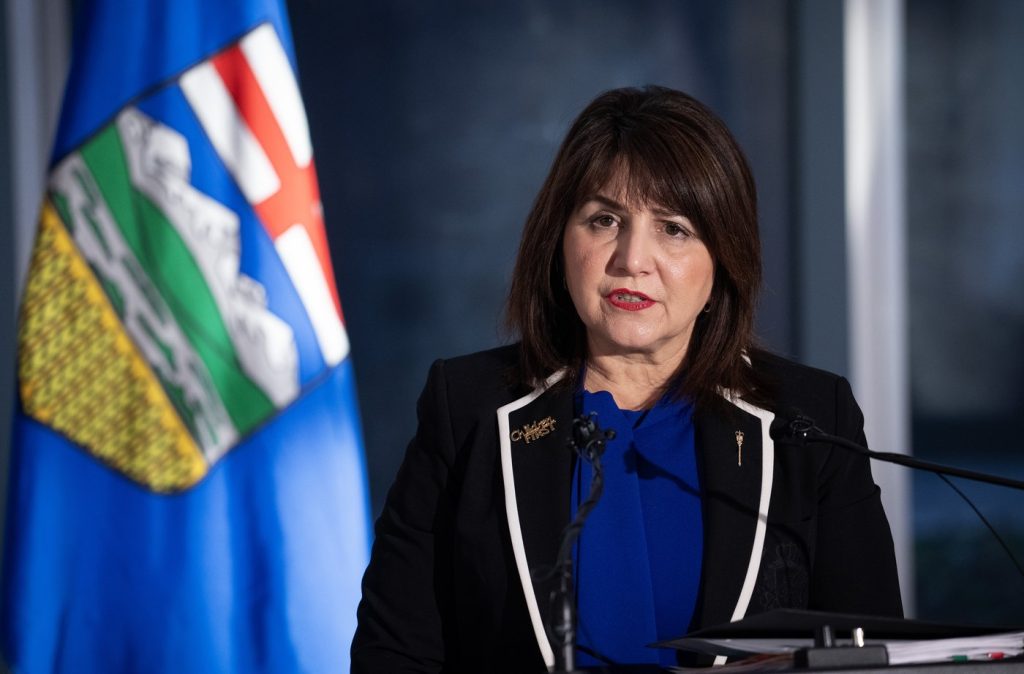Canada’s best-preserved Triceratops skull unveiled at Royal Tyrrell Museum

Posted Oct 6, 2023 8:49 am.
Last Updated Oct 6, 2023 8:50 am.
Seven years of work and millions of years of fossilization has resulted in the best preserved triceratops skull in Canadian history.
Her name is Calli and she’s now on display at the Royal Tyrell Museum of Paleontology in Drumheller, Alta.
The museum team estimates that she was a young adult when she died, around 68 million years ago.
She was only discovered after a flood swept through southern Alberta and researchers went looking for more dinosaurs.
“We were searching along the Oldman River which was an area that we had previously found material, so we were searching some of those old sites,” said head technician Joe Sanchez. “As we were walking along, just sitting in the cobblebar, we noticed a bone called the pre-dentuary, which is the beak — the bottom portion of the beak.”
They looked up and saw a piece of the cheek sticking out, then finding the tip of a horn and became excited that they might have come across something spectacular.
“I flipped over a little chunk of rock and we noticed the other horn was there,” Sanchez added. “So we knew we had the left and the right horn and once we saw that, we were pretty confident we were probably gonna have the whole skull.”
In 2015, one year after the initial discovery, a helicopter transported the massive excavation to the Royal Tyrrell Museum, where work began — chipping away the rock millimeter by millimeter.
“You can see all the grooves and the pits on there, and so all of those grooves and pits on there, I had to get in with my little airscribe and clear those out,” explained fossil technician Ian MacDonald.
“It’s not just a question of sticking this tiny piece to this tiny piece, it was like sticking a piece that weighs more than I do to another piece that weights five times more than I do,” he added.
Work with Calli is far from over as researchers will now take the lead, learning what they can from a skull that they believe holds answers to questions that haven’t yet been thought of.
“We can tell a lot about how these dinosaurs were evolving and changing through time,” said curator of dinosaur systematics and evolution at the museum, Caleb Brown. “Specimens like this, where we have them being exceptionally complete just add more data to our already existing dataset.
“So it’ll be interesting to see how this fits into the picture of triceratops taxonomy and evolution.”
It’s an exciting project for everyone involved, something to mark a career with, and bring excitement to those who come to see it.
“I’m hoping that it’s something that’ll spark people’s interest in science in general, paleontology in particular of course, but just science in general,” said MacDonald.








